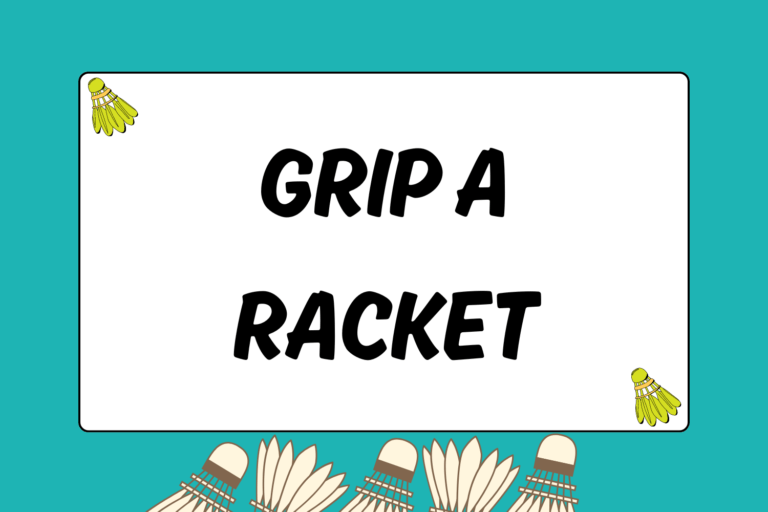Knowing how to move around the court is important, but knowing where to move is just as crucial. This is the defining characteristic of doubles rotation in badminton. Its importance cannot be overstated because you and your partner should be working together like a well-oiled machine. If one part isn’t functioning properly, the whole thing fails.
This guide will teach you exactly what doubles rotation is and how to do it.
Importance of Rotation
In singles, you’re responsible for every shot, and your interaction is strictly with your opponent. For doubles, however, it becomes more complicated because you also have to focus on staying in tune with your partner. You and your partner will each need to constantly adjust your positioning as the other person moves around the court to return shots.
If your partner moves back to take a clear and makes a strong smash, you’ll want to be in the front to cover any poor returns by the opponent. If you fail to rotate properly, then the advantage your partner gained will immediately be lost. If you’re not working together, then you’ll only be working against each other.
Basic Formations
There are two basic formations used in doubles: offensive and defensive. These formations describe where the base point is for each partner and what each player’s responsibilities are. In their most basic sense, these formations represent what each member of your team will be responsible for at any given moment during a rally.
For the offensive formation, there will be two base points along the center line:
- The front base point will be near the short service line, while the back base point is near the long service line.
- The front player will be responsible for the front half of the court, and the back player is responsible for the back half.
Hot Tip: Don’t Move Back!
If you’re playing the front in the offensive formation, any backward motion is counter-productive. You should never need to take more than a step back to hit the shuttle. In most cases, your partner will be behind you and in a much better position to take the shot.
For the defensive formation, there are two base points, one in the center of each service box:
- Most of the movement will be front-to-back on your respective sides.
- The player whose forehand covers the middle should cover shots directed in that area.
Basic Rotation
Knowing when and where to rotate is simpler than you might think. As a basic rule, whenever your team hits an offensive shot, your team should assume an offensive formation. Conversely, you’ll want to assume a defensive formation any time your team hits a defensive shot. As you become accustomed to this rotation, you’ll begin to see subtleties and exceptions that you can learn to adjust for.
The most crucial thing you must realize is that you are working with your partner to cover the entire court at all times. Every time your partner moves in one direction, you must make the proper adjustment to cover the area your partner left. As a team, you and your partner must be prepared to cover a shot to any area of the court at all times.
Rotation Requires Work
Although rotation is intended to make the game easier, it only works if you put effort into it. If your opponents hit a clear to your partner, you should immediately rotate to the front and assume an offensive formation.
While you won’t know exactly what shot your partner will make, you should assume it will be an offensive one because of the prime opportunity for it. If your partner hits a clear back, you’ll have enough time to rotate back into a defensive formation. If your partner does attack, then you’ll have adequate time and proper positioning to maintain the offensive advantage.
Rotation Run-Down
While the basics of doubles rotation are straightforward, there are exceptions that can make certain situations complicated.
The section below will detail four situations to provide a clearer understanding of the purpose and nature of doubles rotation.
1. Rotation after Returning a Serve
This situation can be extremely tricky because split-second decisions need to be made.
Although your goal is to attack a serve, you may not always be able to do so. You could attempt to drive or drop a serve, but if you’re unsuccessful, your opponents will have an opportunity to go on the offensive.
This means you only have that small window of time to decide whether you should be moving up to assume an offensive formation or moving back to assume a defensive one.
The more deliberate and consistent your actions are, the easier it will be for you and your partner to rotate accordingly.
2. Offensive to Defensive Rotation
In the offensive formation, one player is in the back and one in the front. If you hit a clear in the offensive formation, you and your partner will need to switch to a defensive formation.
The problem, however, lies in not knowing who will rotate to which side. As long as you are constantly aware of the rallies, the answer is simple enough: Rotate to the side furthest from your partner.
For example, if your partner moved to the back-right side of the court to hit a clear, you should move to the left side since it would be more difficult for your partner to cover.
3. Defensive to Offensive Rotation
Rotating from a defensive formation to an offensive one is much simpler than doing the opposite. Clears to the right or left side will naturally be taken by the player covering that side.
The problem arises when a clear is hit to the middle, and both players are capable of taking the shot. While the player whose forehand side covers the middle normally gets priority, there is no definitive line that marks where the middle ends and begins.
As a result, your safest bet is to communicate with your partner and call the shot if you can take it. Calling the shot will avoid confusion and allow the rotation to go more smoothly.
4. Switching Offensive Positions
This rotation can be the most difficult to learn because it’s basically a judgment call.
There are obvious times to switch offensive positions. For instance, if the opponent hits a clear to you, and then hits a half-court shot, and then hits a drop, your momentum will be carrying you closer and closer to the net. This makes it logical for your partner to rotate to the back offensive position.
However, offensive switches become difficult when your offensive advantage hinges upon it. For example, if your partner hits a tough smash in the back-left corner and is out of position to cover the back-right corner, you should be prepared to cover it should your opponents hit there.
The difficult decision lies in determining whether your partner can recover. This sort of judgment call only comes with experience playing badminton and playing with your partner.
Trust Your Partner
Doubles rotation is a two-person job. You could be making all the proper rotations, but if your partner isn’t, then your efforts will be wasted. This is where trust and chemistry enter the picture.
As quirky as doubles rotation can be, it can be even quirkier with a partner who has tendencies that may not mesh with you. If you can learn to trust your partner while hashing out the details, your team chemistry will only grow.





